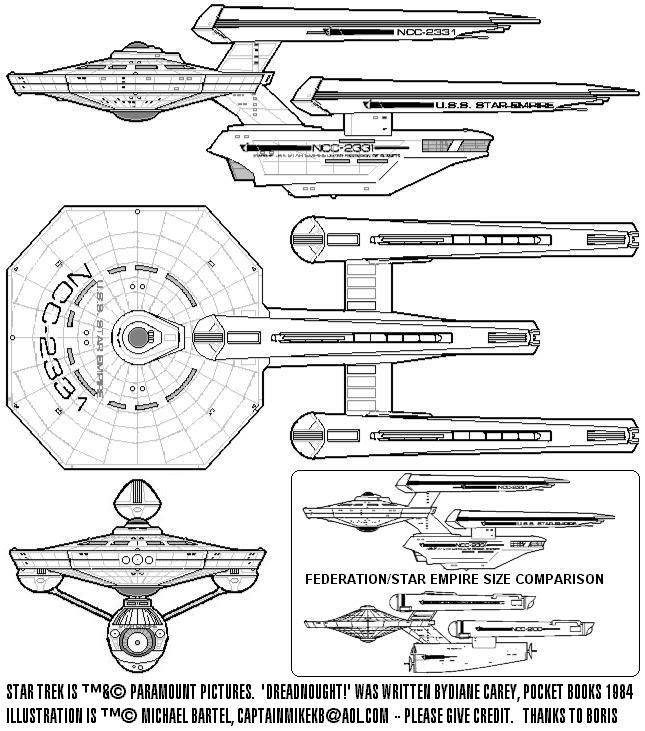There was a novel called "Dreadnought" which featured a 320 meter, 3-nacelled Federation-Class Starship.
I noticed it had no visible bridge, just a sensor dome up-top. Was that to avoid a visible bridge that could easily be blown-away? (The bridge I assume was buried deep inside the ship)
Also, with the third nacelle mounted on top of the saucer section, I would assume after a seperation, the saucer itself could go to warp?
CuttingEdge100
I noticed it had no visible bridge, just a sensor dome up-top. Was that to avoid a visible bridge that could easily be blown-away? (The bridge I assume was buried deep inside the ship)
Also, with the third nacelle mounted on top of the saucer section, I would assume after a seperation, the saucer itself could go to warp?
CuttingEdge100



